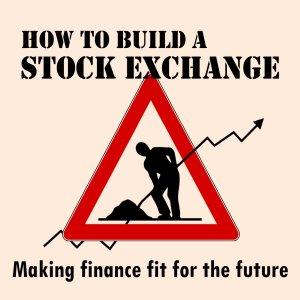How to Build a Stock Exchange

Episode 18. How to build a stock exchange (at last)
In this, the podcast’s last episode, I finally, absolutely, and almost completely definitively, tell you how to build a stock exchange (and who invented unicorns).
Transcript
‘It had been a bad trip … fast and wild in some moments, slow and dirty in others, but on balance it looked like a bummer. On my way back to San Francisco, I tried to compose a fitting epitaph. I wanted something original, but there was no escaping the echo of Mistah Kurtz’ final words from the Heart of Darkness: ‘The horror! The horror! … Exterminate all the brutes!’
That’s Hunter S Thompson finishing up the tale of his long encounter with the San Francisco Hells Angels. In this classic bit of gonzo ethnography Thompson has been in the thick of it, drinking hard and hitting the drugs, riding loud bikes too quickly, and generally being a nuisance – although as he is quick enough to point out, the real nuisance came not from the bikers but from more refined figures who dropped in on the party. The unnamed poet who threw a bin under the wheels of a passing bus, for example.
Social theorist Eve Chiapello tells us that capitalism feeds off critique, and the ill-behaved gonzo has been absorbed into the rhetoric of business.[1] Christopher Locke, the author of the 2001 hit business book ‘Gonzo Marketing’ is, like all good marketers, a master of the un-ironic pastiche: ‘wandering barefoot on the Lower East side of New York, over $1000 cash in my pocket, looking to score… Also in my pocket, the tarot …I went into The Eatery on Second Avenue and my waitress saw the cards…I had just dropped another tab and had little time left…but she sat with me…‘You have two Magicians,’ she said’. As Martin Hirst, from whom I’ve borrowed this choice quotation, points out, Locke’s prose is Thompson with Easton Ellis namedropping thrown in.[2] Still, the book sold and the strapline, ‘winning through worst practices’ epitomises everything that’s wrong with contemporary business: the acceptance of winner-takes-all competition and the seductive notion that it somehow could be cool to get ahead by means that dance around the edge of acceptable. Finance is not immune from this aesthetic: the cinematic portrayal of finance as lubricated by booze, cocaine and trips to brothels marked down as expenses, in the quasi-autobiography of Jordan Belfort’s Wolf of Wall Street or the post-crash analysis of Inside Job.
What is gonzo anyway? Something with a bit more integrity than barefoot and stoned in Manhattan, and the drugs seem to be peripheral. Rather, it’s an intimate, first person take that emphasises spontaneity and raw authenticity over form and polish, where ‘deliberate derangement of the senses… de-familiarises reality, opening the door to paradoxically clearer perceptions, a twisted perspective..’ So says literary scholar Jason Mosser.[3] What’s more, the spontaneity turns out to be artifice: Thompson’s prose is a result of a strange collaborative production involving his own demented writing and inability to meet a deadline, tearing pages out of the notebook and faxing them in; the transcribing typist making whatever sense she could out of what she received; editors and copywriters doing their best. Sociologist Jesse Wozniak calls for ‘gonzo sociology’, an ‘immersive, reflexive methodology which eschews rigidity and formulaic design in favour of innovative and imaginative research on places and peoples ignored by the academy’.[4] Gonzo academic is never going to be that gonzo: it’s rather a reaction against the ‘staid practices of the field’ (in Wozniak’s words). We can permit ourselves a certain licence – an element of reflection, of the personal, a struggle to find a voice that speaks more widely than the dry prose of the academic journal. So I have told you of breakfast in the Cadogan Hotel wi...






 Visit Podcast Website
Visit Podcast Website RSS Podcast Feed
RSS Podcast Feed Subscribe
Subscribe
 Add to MyCast
Add to MyCast